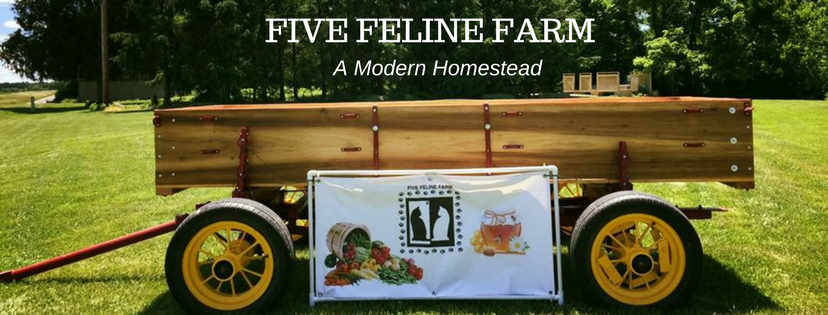What is the definition of a real farm?
Is there a certain amount of acreage required? Maybe a minimum amount of produce raised? Perhaps keeping livestock meets the qualification?
We have asked ourselves these questions as we build this slice of the country we call Five Feline Farm. At first, we referred to it as just the “farm”; a tongue-in-cheek expression of our postage stamp sized property plopped in the middle of large fields of corn, soybeans and wheat. As we discover our mission to live a full life with a blend of old skills and modern conveniences, we also found the answer to being real.
Is there a minimum required acreage?
We have five and a half acres. From this fertile land, we can grow a lot of the produce, herbs, fruit and nuts we need to keep our pantry and freezers full. There is even enough excess to sell at the Farmer’s Market. It takes a lot of planning and hard work but it is a joy to bite into a warm tomato fresh from the garden or add home grown roasted peppers to a pot of chili in the depth of winter.
How about a minimum amount of production?
The line of products we offer in our Mercantile, whether on line or on site is limited only by our time and imagination. We sew cat toys from scraps of fabric and stuff them with catnip grown and dried on the farm. There are balms and soaps and jams and baked goods all created right here. We even offer farm roasted whole coffee beans.
Are livestock required?
Did you know honeybees are considered livestock? It’s true according to the Illinois Department of Agriculture. Beekeeping has changed our perspective on many things. We are better consumers and more aware of good practice in how we approach planting, fertilizing and particularly pest management. We use this practical mantra: “if it’s good for the bees, it’s good for us”. Plus, any excess honey harvested beyond what we personally use is sold.
So our answer to the question….
Yes, Five Feline Farm is a real farm.

Five Feline Farm is growing beyond our wildest dreams. Follow us on Instagram, Twitter and Facebook for daily updates.




